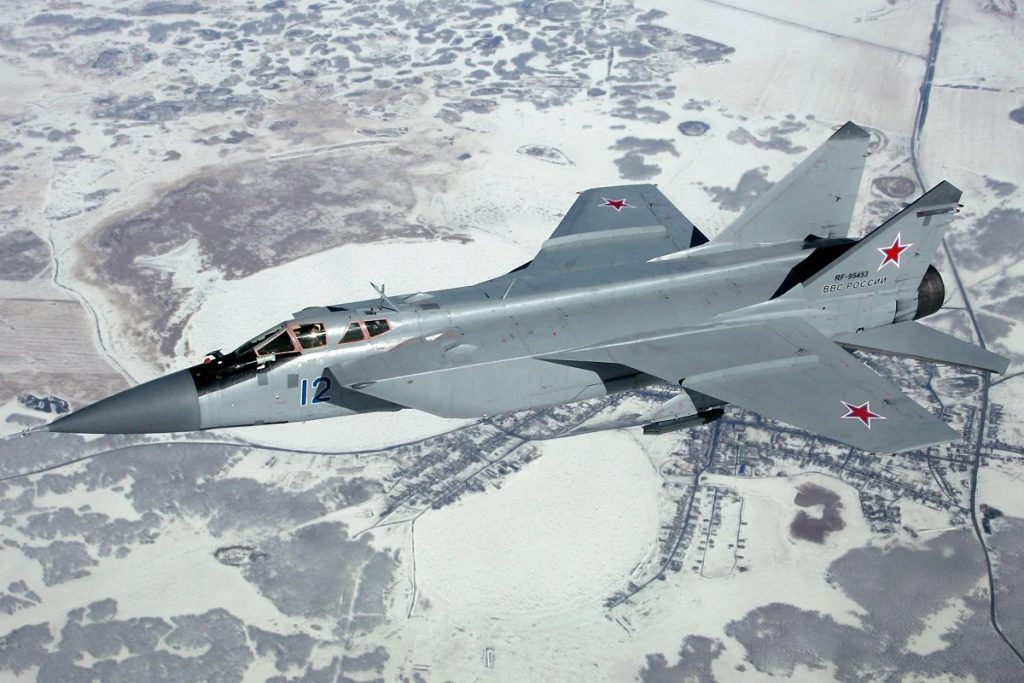
The unexpected crash of a Russian MiG-31 interceptor in the Lipetsk area, several hours ahead of a record nocturnal drone and missile strike into Ukraine, highlighted rising technology and logistical tensions between the warring sides. The crash about 300 kilometers from the Ukrainian border left one of Russia’s fastest warplanes in smoldering pieces—a twin-seat twin-engine supersonic fighter capable of carrying Kinzhal hypersonic missiles and cruising at speeds of up to 3,000 km/h.

MiG-31 Technical Characterization and Mission
The MiG-31, which has been in service since 1981, is an intercept aircraft with range, tasked with destroying high-speed air targets at altitudes of up to 21,000 meters. Its strategic position within the Russian air defense system makes it the target for long-range attack and interception missions. There have been a few MiG-31 losses recently, the overwhelming majority of which are being attributed to age-related hardware and mechanical failures. The Lipetsk crash due to a suspected landing gear failure is one of the attrition trends in the Russian air force. Telegram channels tracking confirmed that Kinzhal missiles were fired in the second attack in Ukraine, and this is a sign of the induction of the planes in the attack plan of Russia.

Scale and Engineering Impact of the Drone and Missile Attack
The Russian military had already dispatched over 450 drones and over 30 missiles in a coordinated attack on nine regions of Ukraine within hours of the crash. Ukrainian air defense reported that it had jammed or destroyed 405 drones and 15 missiles, a success that included the concurrent use of radar, electronic warfare, and kinetic intercept systems. The strikes hit electricity infrastructure, cutting power to over a million customers and shutting off the water supply for up to two million residents of the capital, Kyiv. Repair teams struggled to restore power to 270,000 customers, but physical damage at several thermal plants accounted for the susceptibility of centralized generation assets to saturation attack.

Energy Grid Vulnerabilities and Resilience in Ukraine
Ukraine’s grid, built in peacetime, has continually been required to be re-tuned to function under wartime operating conditions. The system’s robustness relies on rapid isolation of failed nodes, bypassing through intact transmission paths, and mobile generation units re-allocation. The provision of Poland’s generators, power backup, and availability of LNG terminals is a critical cross-border engineering support, delivering periodical capacity injections and redundancy. Sequential bombing of thermal power plants and substations, however, unveils Russia’s intention to target grid interdependencies to bring about cascading failure.

Anti-Drone Defense Challenges
The disproportionately large numbers of incoming drones are an expression of Russia’s saturation strategy, compelling Ukraine to burn up its valuable interceptors on low-cost air targets. Europe’s further travails from such swarms, as referenced in the layered shield doctrine, depend on extensible jammers, directed-energy systems, and combined missile defenses. Jamming hundreds of drones in one night by Ukraine is a demonstration of combat intelligence, but constant defense on this scale implies constant resupply with ammunition and quick software updates for recognition.

Ukrainian Long-Range Strikes Against Russian Oil Facilities
Simultaneously, Ukraine escalated the shelling of Russian oil refineries, with 21 of the country’s 38 large refineries being hit since January. Missiles deep in Russia—like on the Gazprom Neftekhim Salavat refinery over 1,100 kilometers from the border—have forced at least 10 plants to temporarily or permanently close since August. The strikes, launched with domestically made missiles and drones, hit Russia’s war machine supply chains and cut gasoline shipments by as much as 20%. Videos of miles-long lines of gas stations in Siberia and petrol rationing on annexed Crimea demonstrate the civilian effect of targeted strikes on industrial hubs.

Fuel Shortage Engineering Consequences
Russia’s refining domestically has dropped to 6.5 million to below five million barrels daily, leading to export prohibition on petrol and curbing diesel sales. The disruption causes rises in crude exports, with crude oil looking abroad for markets. Independent garages see wholesale price increases of 40% and curtailed credit facilities, and military logistics based on refined fuel have to adjust to lower levels of production. Experts compare the impact to a series of imminent non-fatal blows that gradually drain the possibility of return—a metaphor that characterizes the attritionist nature of infrastructure warfare.

Strategic and Technical Implications
Russian energy grid raids synchronized with Ukrainian raids on refineries are a synergy in targeting strategic assets as leverage for war. For Russia, it is being prepared with interceptors such as the MiG-31 fleet while sustaining industrial losses. For Ukraine, it is the deep-strike capacity and insertion of foreign-supplied systems into its combat power. Both are fighting a technologically advanced war in which engineering expertise, logistic flexibility, and precise targeting are as applicable as tactical maneuver.
The crash of the Lipetsk MiG-31 and one of the war’s largest attacks on energy infrastructure are absolutely ideal examples of high-value asset vulnerability and greater dependence on infrastructure warfare. Every strike—a blow against the supersonic interceptor or thermal power plant—vibrates through military might, civilian society, and strategic ledger keeping in general.


